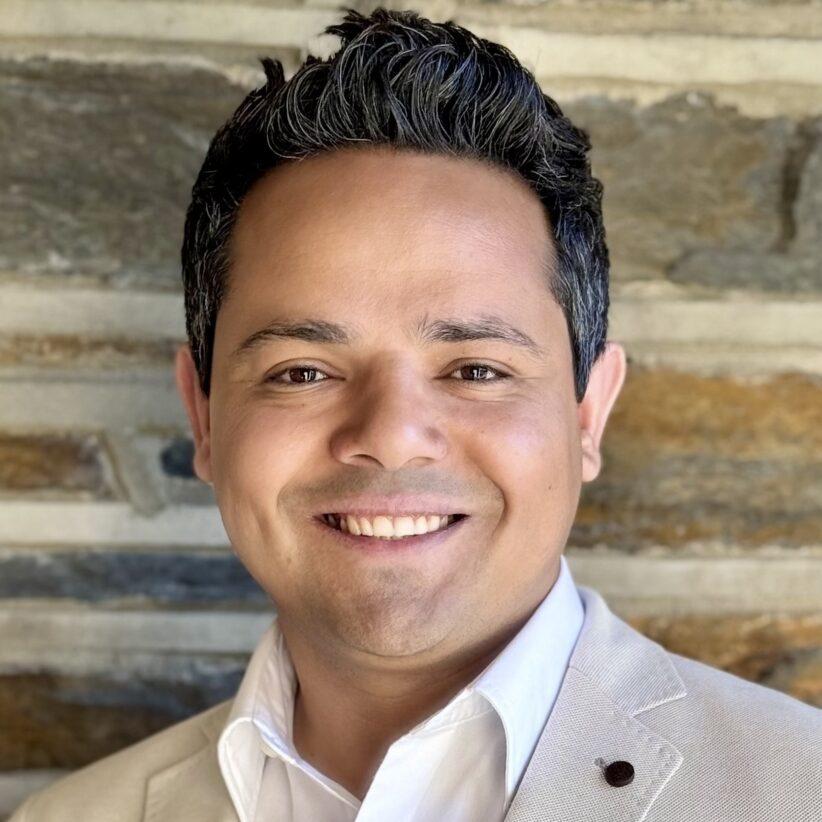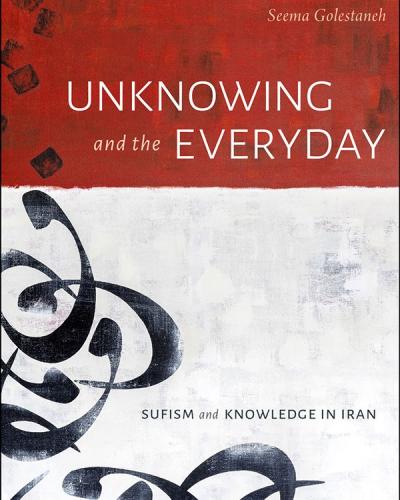Seema Golestaneh came to the study of Sufism – a form of Islamic mysticism – in a roundabout way. An assistant professor of Near Eastern studies in the College of Arts and Sciences, she was initially interested in musicians and artists in contemporary Iran, and the intersection between aesthetics and meaning-making in everyday life. When she got to know some of these musicians, she learned they were Sufis, and she became fascinated by some of their ideas concerning Islam.
Soon she found herself falling down “the rabbit hole of studies of modern mysticism,” she said.
In her new book, “Unknowing and the Everyday: Sufism and Knowledge in Iran,” published this month by Duke University Press, Golestaneh uses interviews and case studies drawn from a decade of fieldwork to explore the ways the Sufi mystical experience – particularly the role of mystical knowledge, or “ma’rifat” in Arabic – is shaping contemporary life in Iran.
Golestaneh spoke with the Chronicle about the book.
Question: How did you come to focus on the concept of ma’rifat?
Answer: I was always interested in how Sufis applied seemingly very abstract mystical ideas – things like the dissolution of the self/ego, cultivating alternative consciousness – to their everyday lives. I first thought they might see mysticism as an opportunity for escapism or transcendence, but after speaking with people they relayed to me how these mystical ideas actually had application (“amal”) for their everyday lives. And the idea of ma‘rifat/unknowing, was a hugely important one. In this way, I realized I was tracing the social life of mystical ideas.
Q: You conducted 10 years of fieldwork for the project. How did you select subjects to interview, and what do these voices bring to the book?
A: Without their voices, there is no book whatsoever. No project, no words on the page – nothing. My primary source of evidence is the conversations I had with people, and then I analyze these conversations, alongside with the particular events and practices that shape the mystics’ lives, within the larger socio-historical and socio-religious context in which they operate. I am forever grateful [to them] for being so generous with their free time. There was really nothing in it for them outside of a shared interest in mysticism.
In terms of subjects to interview, I chose one of the cities in which I worked because it a long history of Sufi practice with a famous shrine site located on the outskirts. Another group I worked with because I had a distant family connection who vouched for me. Basically my parameters were pretty broad, in that I was interested in mystics who: one, belonged to a collective, and two, identified with a particular religious/intellectual tradition – that of Shah Nimatullahi Wali. From there, in terms of choosing subjects, I kind of spoke with whomever would have me.
Q: How might understanding ma‘rifat be useful for, say, secular people living in the U.S.?
A: Unknowing is a form of knowledge that challenges knowledge; it’s an awareness that there are always limits to what we can know. In a world that is becoming increasingly unpredictable and unstable – in terms of geopolitics, in terms of climate change – I think it is useful to be able to incorporate into our lives the idea that there will always be that which we do not know. To embrace a form of knowledge that itself embraces indeterminacy and irresolution, to see the unformed paths before us as an opportunity rather than an obstacle, is something that, I think, we can all learn from. One small note: ma’rifat is actually a hugely debated concept within Islamic thought, and so this particular interpretation – an embrace of unknowing something – is unique to my interlocutors and other thinkers, but certainly not all Islamic mystics.
Q: Were there any challenges in discussing such an esoteric concept with people, or in writing about it?
A: It wasn’t so difficult to discuss esoteric concepts with the Sufis, because many of them loved to do so, and some spent a decent amount of their free time doing exactly that. I had some difficulty in that people would often refer me to their teachers, or some other more learned authority figure, because they thought I wanted to just learn about Sufism, when really I also wanted to learn what they themselves thought about Sufi ideas. In other words, how lay people interpreted and thought about some very thorny and abstruse philosophical ideas.
The hardest part of all was actually translating these ideas into scholarly writing so I didn’t sound totally bananas. For example, how do I write about key ideas in Sufi thought like “the secret of the secret of the heart” – that’s not a typo, but a sort of double secret – in a way that can be taken seriously and at the same time not lose its poetic nature? I hope I was able to write it in a coherent way, and if I did, it was by doing it slowly and with many, many edits.
Q: What do you hope readers ultimately take away from the book?
A: One, the incredible level of sophistication within contemporary Islamic thought happening today. And this is just with lay people, the vast majority of whom don’t have any formal training in the Islamic sciences at all. There are these really beautiful discussions and debates happening around poetry, philosophy, belief, intention, music, aesthetics and more. These ideas have analogs in the highest forms of contemporary theory and philosophy in the Western canon. And two, that mysticism is not something that is relegated to the page, a transcendent kind of thinking that has no bearing on the modern world, but is being brought to life by those who adhere to its teaching. Mysticism is a living thing, with people engaging with and incorporating these seemingly abstract themes into the world of the everyday.
Read the story in the Cornell Chronicle: Islamic mysticism shows the limits of knowledge in an unstable world | Cornell Chronicle





